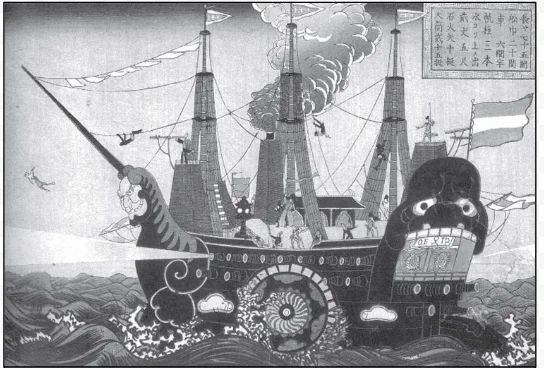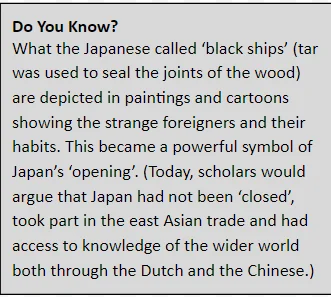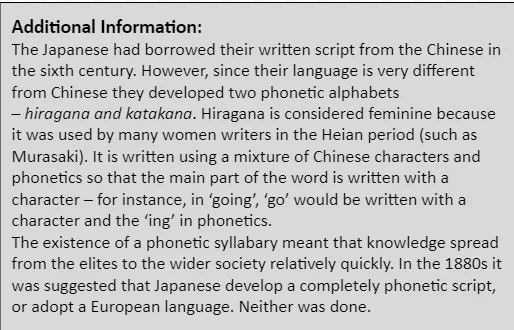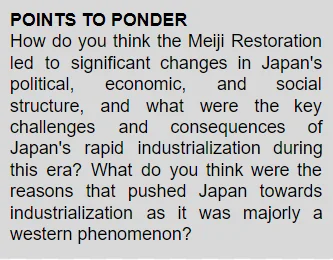![]() 16 Jul 2024
16 Jul 2024
Internal discontent coincided with demands for trade and diplomatic relations. In 1853, the USA sent Commodore Matthew Perry (1794- 1858) to Japan to demand that the government sign a treaty that would permit trade and open diplomatic relations, which it did the following year. Japan lay on the route to China which the USA saw as a major market; also, their whaling ships in the Pacific needed a place to refuel. At that time, there was only one Western country that traded with Japan, Holland.
Beginning of Meiji Restoration
The arrival of Commodore Matthew Perry in Japan in 1853 marked a significant turning point in Japanese history. This event and the broader context had several important consequences for Japan:



The Meiji Era in Japan brought about significant economic reforms and modernization. Let us understand some key aspects of this transformation.
Agricultural Tax: The government raised funds by levying an agricultural tax. This tax provided a source of revenue to fund various modernization projects.

Meiji (1852—1912) Emperor of Japan
|
| Must Read | |
| Current Affairs | Editorial Analysis |
| Upsc Notes | Upsc Blogs |
| NCERT Notes | Free Main Answer Writing |
The Meiji Restoration transformed Japan from a feudal society into a modern industrial and military power. Through extensive economic reforms, administrative changes, and Western influences, Japan emerged as a significant player on the global stage, shaping its future as a major industrial and colonial power.
| Related Articles | |
| INDIA-US RELATIONS | Three Different Stages of Colonialism |
| India Japan Relations | List of Joint Military Exercises of India |
<div class="new-fform">
</div>